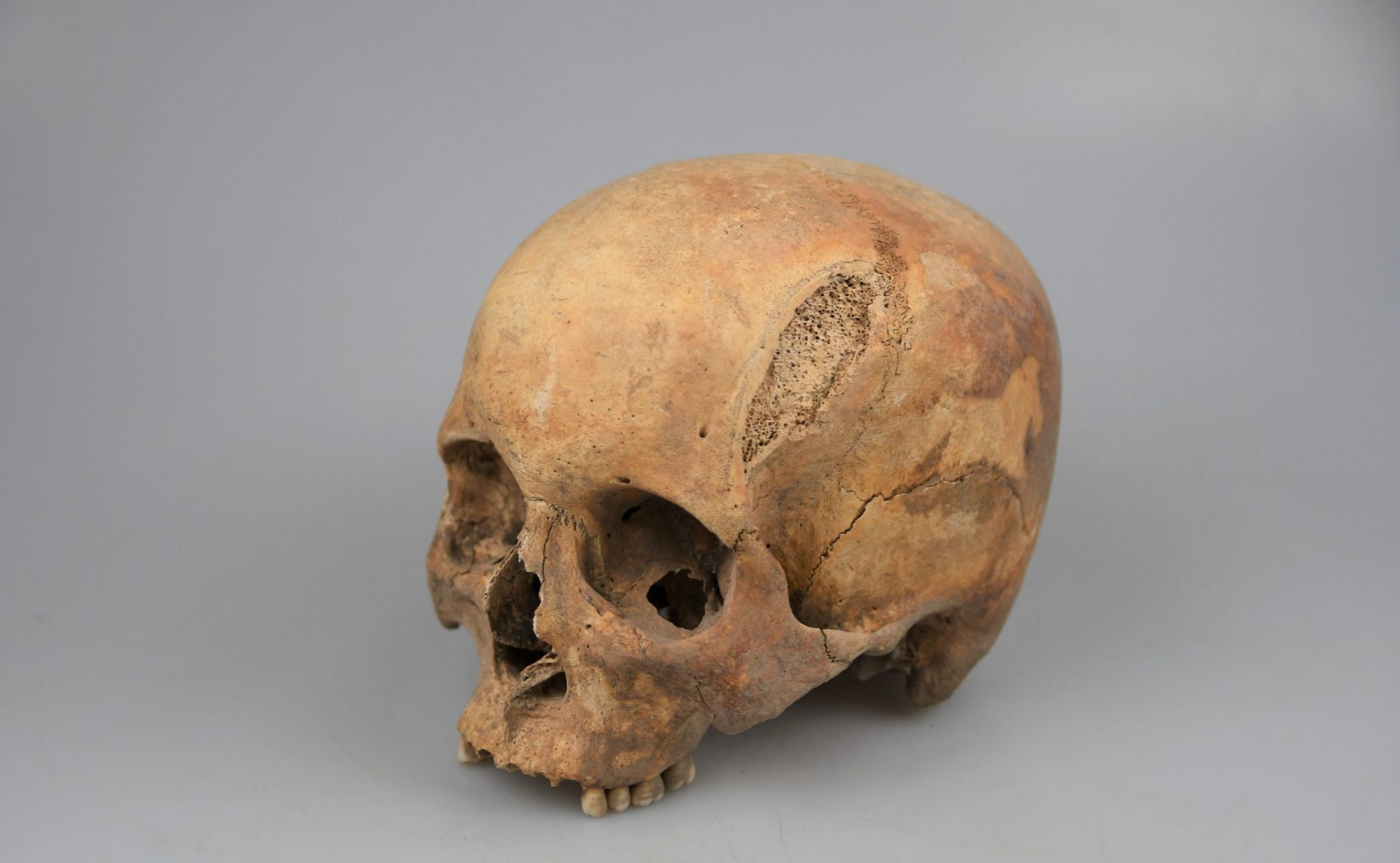Plinkaigalis burial ground is located in Kėdainiai district. The archaeological research of the site was carried out in 1977 by leading archaeologist Eugenijus Jovaiša, and from 1978 to 1984 – by Vytautas Kazakevičius. Plinkaigalis burial ground is the most extensively studied Lithuanian Iron Age burial site. During seven years of archeological research, an area of 4 500 m2 was explored with 366 inhumations (buried in coffins), 8 cremated graves, and 4 horse graves were unveiled. The majority of burials date back to the 5th-6th centuries, while cremations to the 7th century. The site was rich in 5th-6th c. archaeological findings, such as knives, axes, swords, combat knives, silver-forged drinking horns, hoes, spindles, sharpeners, yokes, belt buckles, brass or silver pins, pins, rings, collars, bracelets, brooches, etc.
The collection contains the skeletal remains of 295 individuals from 1977-1984 archaeological excavations when 366 burials were uncovered. The skeletons of 71 individuals were analyzed in previous anthropological studies and reburied after the studies. The skeletal remains from Plinkaigalis are not complete, i.e. the collection includes skulls and long bones only; in exceptional cases pelvic bones and pathological cases of vertebral columns were added too. Therefore, the collection should be treated as partial or fragmentary. It must be emphasized that the condition of the bones themselves is excellent.
|
Preservation |
n |
% |
|
Complete skeleton (>50 %) |
0 |
0 |
|
Partially preserved skeleton (~50 %) |
150 |
50,8 % |
|
Fragmentary skeleton (<50 %) |
145 |
49,2 % |
Of the 295 individuals, 68.8% are adults and 31.2% are non-adults (Fig. 1). Male and probable male accounted for 36.3% of all individuals studied, while female and probable female – 22%. The age distribution of non-adults is shown in Fig. 2 and that of adults in Fig. 3.



